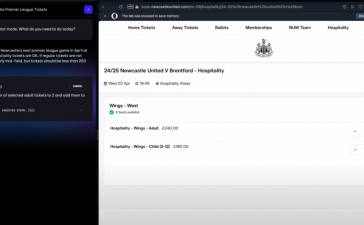How do you convince a skeptical public that your autonomous vehicles are not only safer than human drivers but also a better way to get around? If you’re Waymo, the answer is data — and lots of it.
The Alphabet-owned company revealed a new safety hub today, complete with glossy graphics and a multitude of charts that will be periodically updated, with the overarching message that its autonomous vehicles are not to be feared. The move comes as Waymo seeks to expand its footprint, win over new customers, and cement its lead in the race to deploy more driverless cars. It also comes as safety regulators have begun to take a harder look at the whole autonomous vehicle industry — including Waymo.
“This matters a lot to us”
“This matters a lot to us,” said Trent Victor, director of safety research and best practices at Waymo, “to be trusted.”
To be sure, self-driving cars have an image problem. They stumble into construction zones, block ambulances, run red lights, and even injure the occasional bicyclist or pedestrian. Numerous public opinion polls have shown declining support for autonomous vehicles over the years and a rise in outright hostility toward the technology.
Waymo thinks its new approach to transparency can help turn the tide in its favor. The hub contains a lot of new, previously unreported information, including the number of driverless miles Waymo has racked up in each of the four cities in which it operates (or, as the company calls it, “RO miles” for “rider-only miles”). As of June 2024, Waymo has driven 15.4 million miles in Phoenix, 5.9 million miles in San Francisco, 855,000 miles in Los Angeles, and 14,000 in Austin.
The last time Waymo released its safety data, in December 2023, the company had only driven 7.1 million rider-only miles. Now, it has over 22.2 million miles across four cities — which reflects a 212 percent increase over eight months. The company says it has around 300 vehicles operating each in San Francisco and Phoenix, its two main markets.
In searching for the best way to communicate its safety message, Waymo zeroed in on a formula that compares its driverless vehicles to human driver benchmarks in crashes that cause injuries and crashes that result in police reports. Last year, Waymo determined that its vehicles were 6.7 times less likely than human drivers to be involved in a crash resulting in an injury, or an 85 percent reduction, and 2.3 times less likely to be in a police-reported crash, or a 57 percent reduction. The company is only presenting this data for Phoenix and San Francisco, the two cities where it has the most miles traveled.
Now, it’s applying these formulas to a larger set of data — and the numbers still look pretty good. As of June 2024, Waymo’s robotaxis have 73 percent fewer injury-causing crashes as compared to human benchmarks and 48 percent fewer police-reported collisions. It also added a new category: airbag deployment crashes. Waymo says it has 26 fewer airbag deployments than the human benchmark, or a decrease of 84 percent. It also breaks out each of these figures for Phoenix and San Francisco specifically.
Another section of previously unreported data is the percentage of Waymo’s crashes that are extremely low speed. The National Highway Traffic Safety Administration requires autonomous vehicle operators to report all crashes and collisions, regardless of severity. For Waymo, that means reporting a lot of extremely minor bumps and scraps, which the company thinks can skew the public’s perception of its vehicles. There is now a large repository of crashes involving self-driving cars, but much of it lacks crucial context.
Waymo zeroed in on a formula that compares its driverless vehicles to human driver benchmarks
The company decided to bring more nuance to the government’s data by including a section in its safety hub that highlights the percent of collisions with a Delta-V — a metric used to measure the change in velocity during a collision — that’s less than 1mph. Waymo found that 43 percent of the crashes disclosed to NHTSA had a Delta-V of less than 1mph. This includes crashes only in Phoenix and San Francisco.
“One mile per hour Delta-V is like a very insignificant crash,” said Kristofer Kusano, staff safety researcher at Waymo. “So this is usually so minor of a crash that it’s not actually even moving the vehicle much.”
This all looks pretty good for Waymo, which is obviously the ultimate goal. But the company knows that it needs independent groups to verify this data — and replicate it — if it’s ever going to achieve mainstream acceptance. To that end, Waymo has produced dozens of research papers outlining its safety approach and has submitted many of them to peer-reviewed journals for publication — several of which have already been accepted.
“We’re really excited about that,” Victor said. “I feel privileged to have the opportunity to publish.”
With the introduction of this new safety hub, Waymo is also making its methodologies available for download, so more outside researchers can look at the raw numbers. “[We’re] allowing people to replicate the results,” Victor added. “See what we did, extend it, look at it through new lenses, add more complexity, and just advance the science.”












